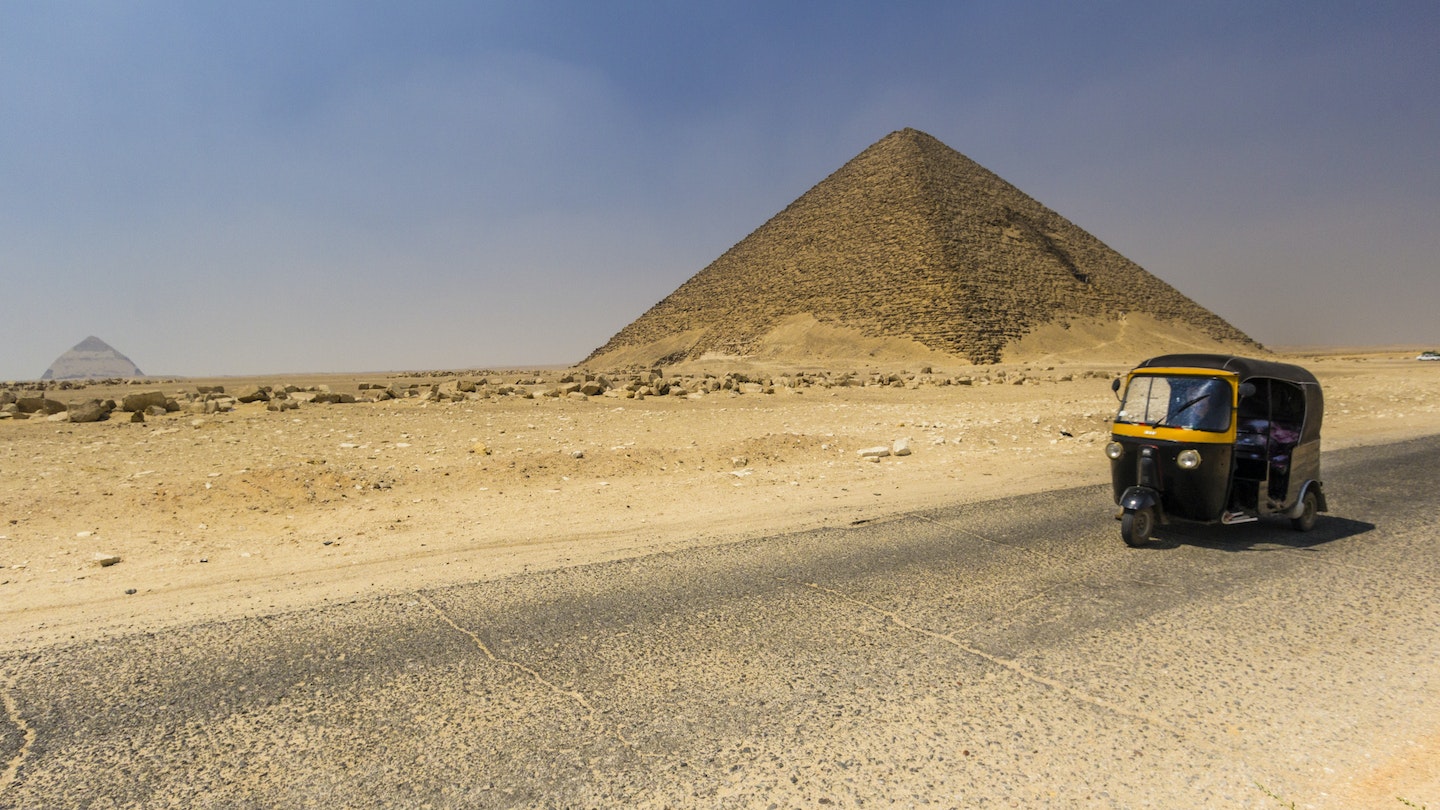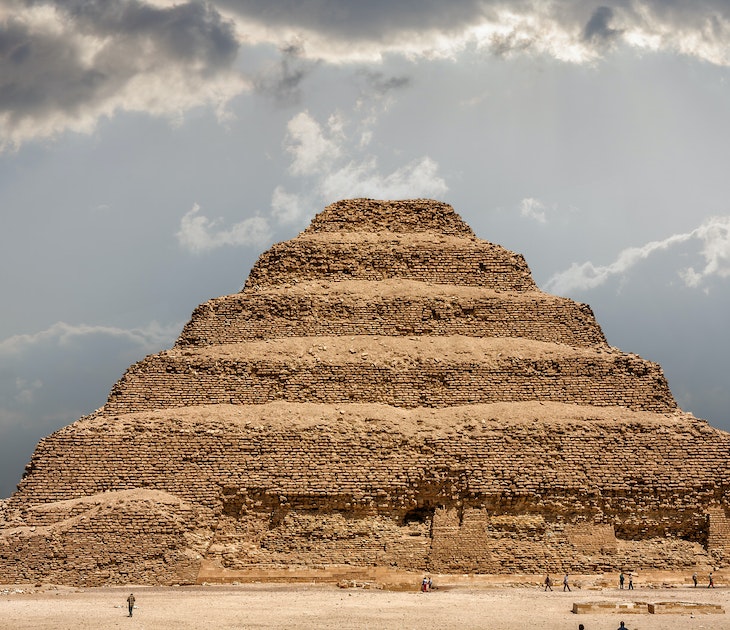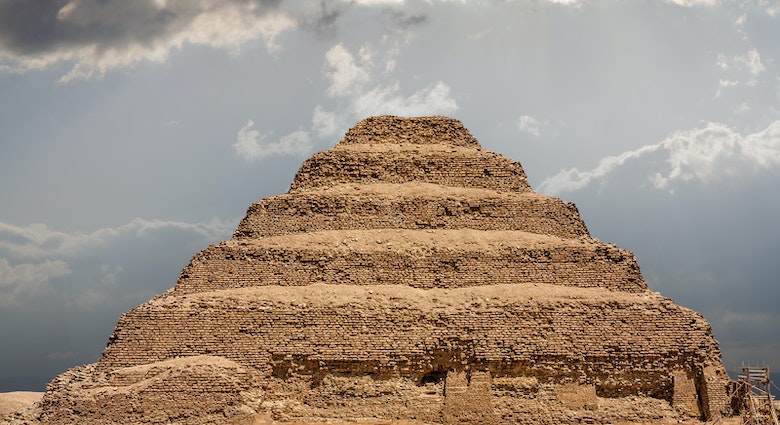Welcome to the city that never stops.
In Cairo, much like the flowing waters of the River Nile, nearly 10 million people tirelessly navigate their days, constantly in motion. Despite this unstoppable momentum, getting around in town is surprisingly straightforward, although travelers will share one common antagonist with locals: traffic jams.
Yes, experiencing the city by car can be quite a stressful challenge, but don’t worry: the metro system is efficient, and if you decide to walk, mastering the art of crossing streets comes quickly with a bit of practice — just like haggling for prices. Here's our guide to finding your way around in Cairo.
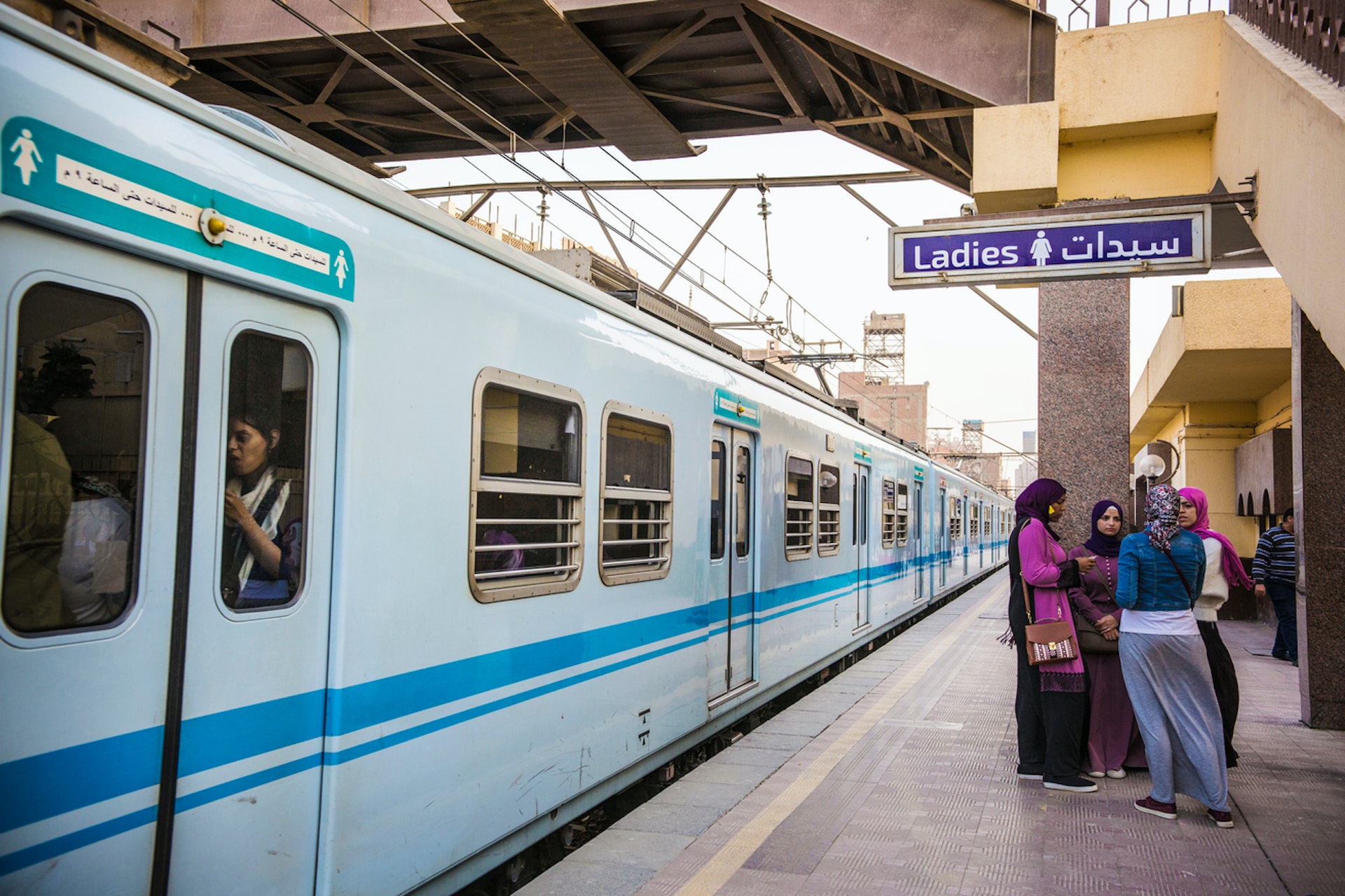
Use a metro/microbus combo to get to the Pyramids
If traffic jams aren't your thing, rely on the Cairo Metro. The completion of Line 3, especially useful for airport access, has expanded Cairo's underground network, and it's likely to become a preferred mode of transit for many visitors. Cars can get crowded – keep in mind that there's a designated central one specifically for women – and during rush hours it's the same story worldwide, with people jostling for space.
To get to the Pyramids, pack your hat and sunscreen and head south. Sadat metro stop at Tahrir Sq, the location of the Egyptian Museum, serves as an excellent starting point. Follow the signs for Line 2 towards El Mounib, and brace yourself for an authentic Cairo experience. It's six stops (LE5) to Giza. For the final stretch, board a shared microbus (several vehicles will be waiting at the metro station, costing LE5–10, taking around 20 minutes). Be prepared to wait until all seats are comfortably filled, and to be packed with locals and travelers carrying all sort of items. The bus will drop you near the Pyramids' ticket office. Don't be misled by individuals claiming closures or reserved areas for specific groups — they're likely touts.
Upon entering the Pyramids area for a self-guided visit, skillfully maneuver past camel and horseback-ride sellers with the finesse of a soccer player and relish the mesmerizing views solo, perhaps from the top of the small sand hills that overlook Menkaure’s tomb. While hiking up there might require more effort than being transported, travelers are usually rewarded with some peaceful moments in front of one of the world’s ancient wonders.

Agree a fare before riding in a taxi, or take an Uber
It's true, being trapped in a taxi might make you wish you never left your hometown. The golden rule: avoid peak hours (8–9am, 6–7pm) and always negotiate the price before beginning the ride to ensure no surprises upon arrival (metered taxis aren’t common). Ride after ride you’ll sharpen your skills and establish your own fare standards.
While driving through Cairo, witness the city's chaos and contrasts firsthand, comfortably seated and most likely accompanied by the timeless music of Umm Kulthum, the Egyptian Diva. For a 30-minute journey from Downtown to the Khan Al Khalili market, consider budgeting around LE100, but taxi fares might vary between LE50 to LE150 at times.
Opting to call a driver if you're spending the evening at a restaurant or cafe can be the fastest way to return to your hotel at night. Getting an Uber in Cairo happens quite quickly, especially in Zamalek – amidst the thousand-and-one bars of the area you’ll wait less than five minutes. If cash payments suit you better, consider downloading Careem. Going to Downtown Cairo will cost you around LE50–60.
Knowing numbers in Arabic can be helpful to identify the car you've booked. Here they are: ٠ (0), ١ (1), ٢ (2), ٣ (3), ٤ (4), ٥ (5), ٦ (6), ٧ (7), ٨ (8), ٩ (9). Typically, car plates consist of three to four numbers followed by three letters.
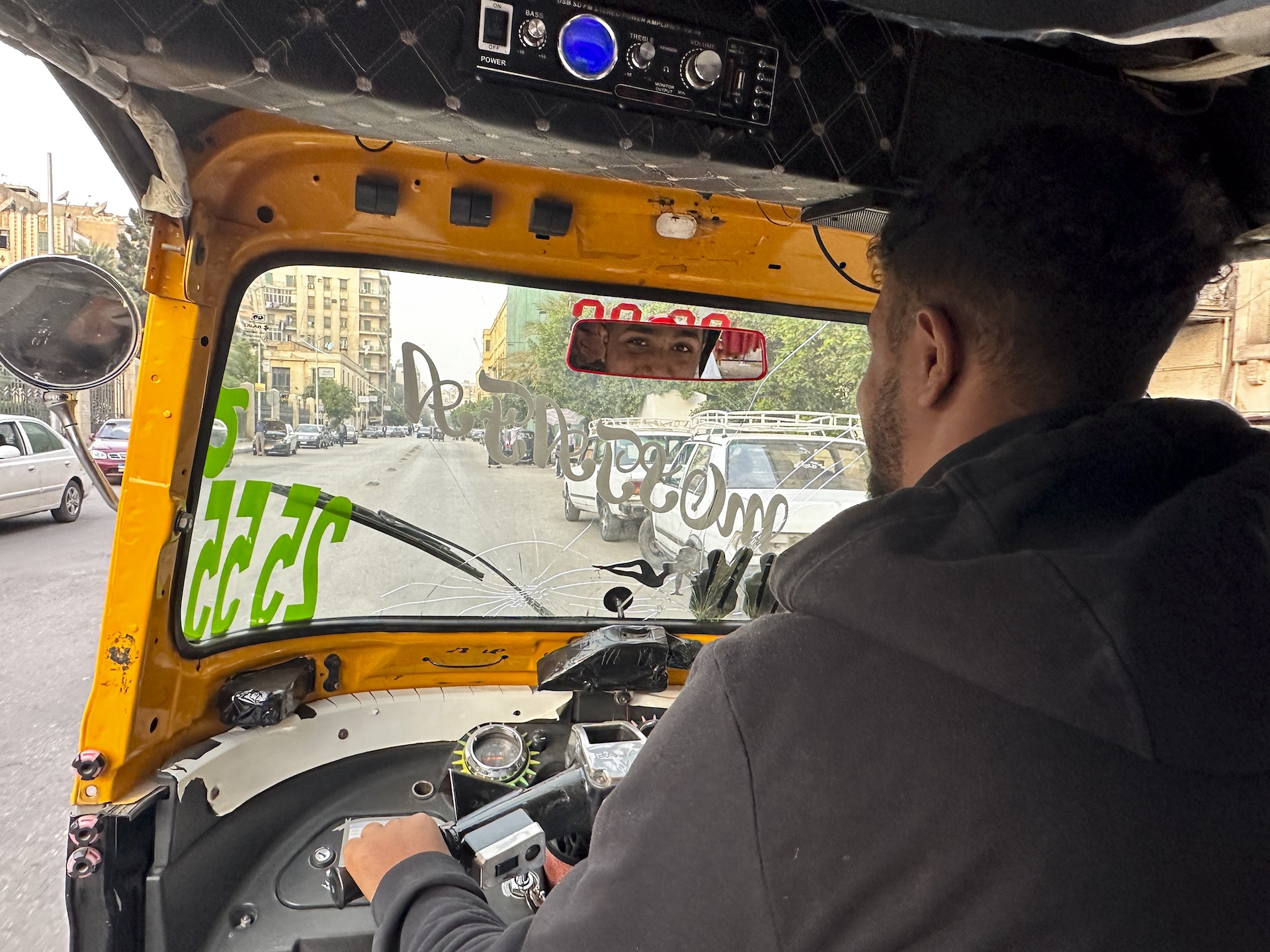
Tuk-tuks are a speedy budget option
Fast (and furious), tuk-tuks have gained respect in Cairo for their ability to move swiftly through traffic jams. Although they appear to require more than just technical maintenance and, occasionally, they're helmed by surprisingly too-young individuals who might otherwise be in school, these noisy Bangkok-style vehicles are both quick and fun (for a 10 minute-ride you’ll pay LE5–25). If visiting the Citadel tops your list of must-see places in Cairo, taking a tuk-tuk will lead you through some of the city's most charming neighborhoods along the way.
Cycle and walk to get around Cairo's neighborhoods
Orange shared bikes are becoming increasingly popular in Cairo, with the installation of 45 brand-new bike stations across the city. To use them, simply download the Cairo Bike app (LE1 per hour). If you rent one from Tahrir you can reach Zamalek in 10 minutes, take a leisurely tour of the island (approximately one hour) and then head towards Midan Taalat Harb. This area is great for exploring on foot – you’ll find good shops, restaurants and cafes – thanks to its wide sidewalks and grand boulevards. While walking in Cairo is generally easy, be prepared for large crowds and the occasional challenge of crossing streets without traffic lights. Imitate locals and be brave, or you’ll be stuck forever.
There are no route maps for the citywide bus network
Those with a soft spot for traveling by bus will find a widespread network of old style, door-opened vehicles reaching literally every corner of the city. Expect crowded buses where you might often have to stand, but these rides provide a fantastic opportunity to interact with locals and immerse yourself in their renowned friendliness.
Unfortunately, no route maps are available: for a taste of the thrill, consider taking bus number 111 from Ramses Station to the airport (one hour). Or simply hop on a random bus and enjoy the ride for a few stops. Tickets (LE5–10) can be purchased from the seller on board or directly from the driver.
Cruise the river on a NileTaxi
Escape Cairo's traffic and enjoy a picturesque journey with NileTaxi — an ideal alternative for moving around the city while cruising the legendary river. Convenient stops, including one near the Qasr el Nil Bridge, line the riverbanks and run from Zamalek to Maadi Pier, in the city's south (fares are LE50–100).
Accessible travel in Cairo
Travelers with disabilities might face challenges in Cairo, where architectural barriers are everywhere. There is a complete absence of curb ramps, and pavements might conceal holes or remnants from construction. Moving in Cairo without a wheelchair taxi is nearly impossible, save for a few exceptions like the grand Al-Azhar Park, which offers accessible pathways in a beautifully green environment. In Giza, while sidewalks aren't highly accessible, the primary connecting roadway between attractions is new and relatively uncongested. Use that one.
If Cairo’s urban planning fails to assist travelers with disabilities, assistance from incredibly kind locals will always be readily available. Additionally, travel agencies offer specially curated tours and accessible excursions across Egypt, tailored to accommodate individuals with disabilities. For further information, download Lonely Planet's free Accessible Travel Online Resources.

